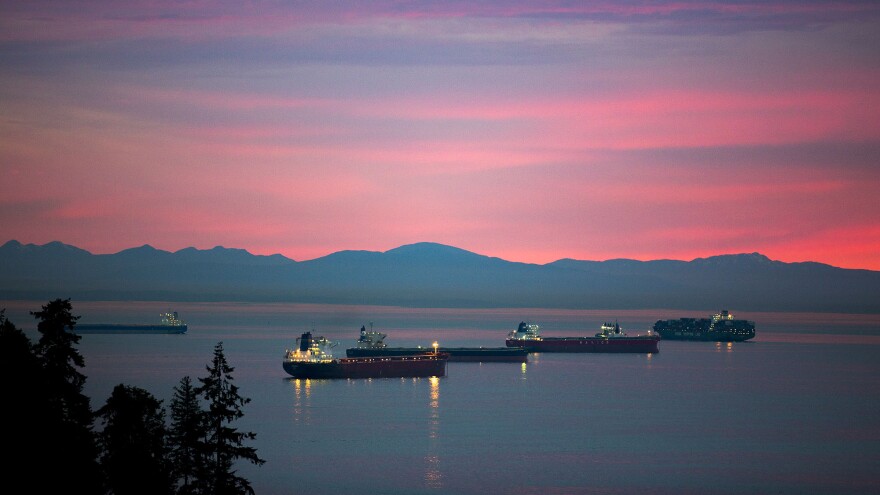Over the past three months, KNKX has hosted a series of weekly interviews about the iconic waterway that includes Puget Sound and extends into British Columbia. Return to the Salish Sea took listeners to locations all around the shores of this shared ecosystem to hear from people who are deeply connected to it and concerned about its future.
KNKX environment reporter Bellamy Pailthorp produced and hosted the 15-week series. In this segment, she shares some highlights with Morning Edition host Kirsten Kendrick.
Oil Spill Risk Looms Large
Visionary Bert Webber, a Canadian professor emeritus at Western Washington University, is the man who came up with the term, Salish Sea and fought for decades to get it recognized. He says back in the 80s, it was concern about crude oil from Alaska coming through the Strait of Juan De Fuca that got them thinking about the need to name and protect the whole ecosystem.
“Vessel traffic has increased in number, especially in the last five years and will even more in the next four or five years,” Webber says. “There is major concern about the impacts of a vessel going aground or being in a collision and having to deal with a major oil spill.”
Protecting Our Home
The concern about oil spills has escalated because of the pending expansion of the Kinder Morgan Pipeline, which has a terminus in Burnaby, B.C., north of Vancouver. The project has been approved by the Canadian federal government and could soon bring as much as seven times more tanker traffic through the Salish Sea. Many groups, including the B.C. government, have taken legal action to try and stop the expansion, even as the company forges ahead with preliminary construction.
One of the most poignant voices in this fight is Charlene Aleck of the Tsleil Waututh, the First Nation that sits right across from the oil terminal on Burrard Inlet. She’s an elected Councilor for her community and a spokeswoman for the nation’s Sacred Trust Initiative, which is fighting the Kinder Morgan expansion in their homeland.
“Our name ‘ Tseil Waututh’ means ‘people of the inlet.’ We have a creation story where our very first grandmother was born out of these waters,” Aleck says. “We also had a saying, ‘when the tide goes out, the table is set,’ meaning about 100 percent of our diet was out of the inlet.”
Bounty Of The Sea
The cornucopia of wildlife that comes from the Salish Sea has also supported many kinds of businesses in the region. One of the most memorable from our series is Diane Bernard, CEO of Seaflora, a company that makes skin care products from seaweed. That line has earned her the nickname “The Seaweed Lady” and turned her into a kind of ambassador for the diverse and abundant plant life, which she says is a sustainable resource that can be kept.
“We have lots of misconceptions about seaweed. Poor seaweeds - they have such a PR problem! So, part of my job is to really improve that and to have people understand this coastline,” she says.
“If we work smartly with our coastline then we can have this resource for a long, long time.”
Defining And Defending A Healthy Ecosystem
People all around the Salish Sea agree that this unique body of water is worth preserving and protecting. How we get there is an open question. It will take a lot of concerted effort.
Another lingering question is what will it actually look like? Can we expect a fully restored ecosystem, or can it change and still be healthy and beautiful?
Joe Gaydos, Chief Scientist with the Seadoc Society and co-author of a glossy coffee table book called Salish Sea, Jewel Of the Pacific says yes. We just need to set standards to design a healthy ecosystem and then work hard toward meeting them.
“The ecosystem is like our bodies. It’s always changing. And you can be a healthy six-year-old and you can be a healthy 66-year-old. And the ecosystem will change,” Gaydos says. “But that doesn’t mean it can’t change and still be a great place.”
To see more photos and read more, visit our Return To The Salish Sea website.







